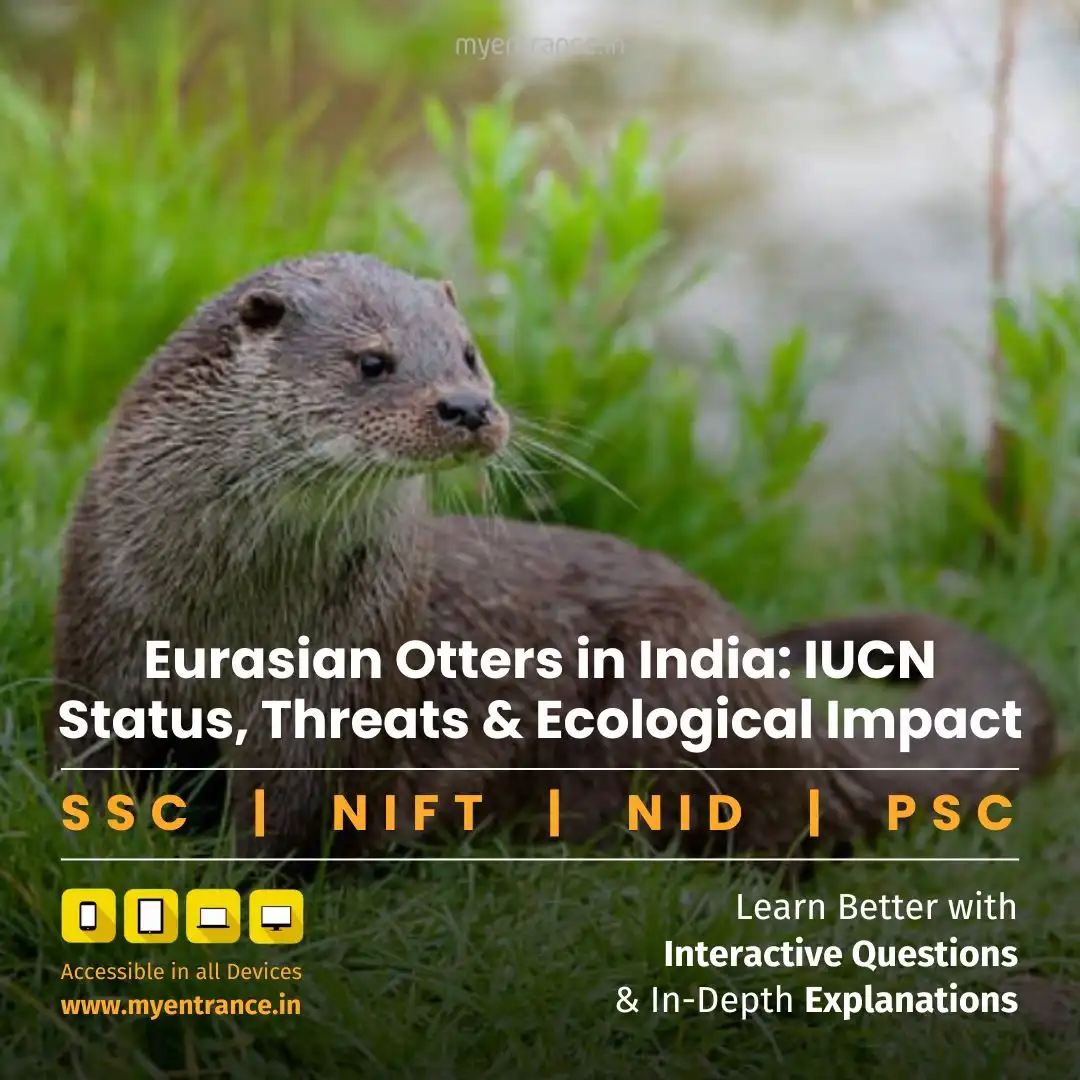Select Language
Eurasian Otters in India: IUCN Status, Threats & Ecological Impact: Sample Q&A
After three decades of presumed extinction, the Eurasian otter has been rediscovered in Kashmir’s Lidder River. This rare sighting signals hope for restoring the region’s degraded aquatic ecosystems.
The Rediscovery: A Watershed Moment
In 2024, villagers in Srigufwara (South Kashmir) spotted an unusual aquatic mammal in the Lidder River. Initially mistaken for a crocodile, wildlife officials confirmed it as the Eurasian otter (Lutra lutra)—locally called Vuder. This marks only the third sighting since May 2024 (earlier in Gurez Valley and Heerpora).
Why This Matters: Ecological Significance
Otters are “keystone species” vital for aquatic health:
Bioindicators: Their presence signals clean water and robust fish populations.
Ecosystem Engineers: By preying on invasive fish, they maintain biodiversity.
Habitat Enrichers: Their dens create shelters for other species.
Near-Threatened Status & Decline in India
IUCN Status: Globally “Near Threatened”; critically endangered in Kashmir.
Historical Range: Once abundant in J&K, Himachal, and Western Ghats.
Reasons for Decline:
Water Pollution: Industrial runoff and pesticides contaminating rivers.
Poaching: Hunted for fur (used in traditional pashmina crafts).
Habitat Loss: Dam construction and sand mining fragmenting rivers.
Conservation Roadmap
Immediate Actions:
CCTV surveillance along Lidder River (as deployed by Kashmir’s Wildlife Department).
Community awareness to prevent hunting.
Long-Term Strategies:
Restore river ecosystems: Curb pollution and mining in Jhelum basin.
Expand Protected Areas: Include otter habitats in Ramsar sites.
Genetic Studies: Assess population diversity for targeted interventions.
Symbolism of the Otter’s Return
The resurgence signals:
Improved river health post-decline in industrial pollution.
Conservation success of recent wildlife protection policies.
Hope for other “lost species” like the Kashmir red deer.
Sample Q&A for Exams
Q: What is the IUCN status of the Eurasian otter?
A: Near Threatened globally; critically endangered in Kashmir.
Q: Why are Eurasian otters ecologically significant?
A: They maintain aquatic biodiversity as apex predators and bioindicators.
Q: Identify two threats to Eurasian otters in India.
A: Water pollution (pesticides/industrial waste) and poaching for fur.
Q: Where was the Eurasian otter recently rediscovered in Kashmir?
A: Lidder River (Srigufwara), Gurez Valley, and Heerpora (2024).
Q: How does the otter’s return reflect environmental changes?
A: It indicates reduced pollution and revival of river ecosystems.
Most Predicted Questions
Comprehensive study materials, Expert-guided tips & tricks, Mock tests and instant results.
Start your SSC, NIFT, NID, FDDI, PSC journey today with MyEntrance, your ultimate online coaching platform.








